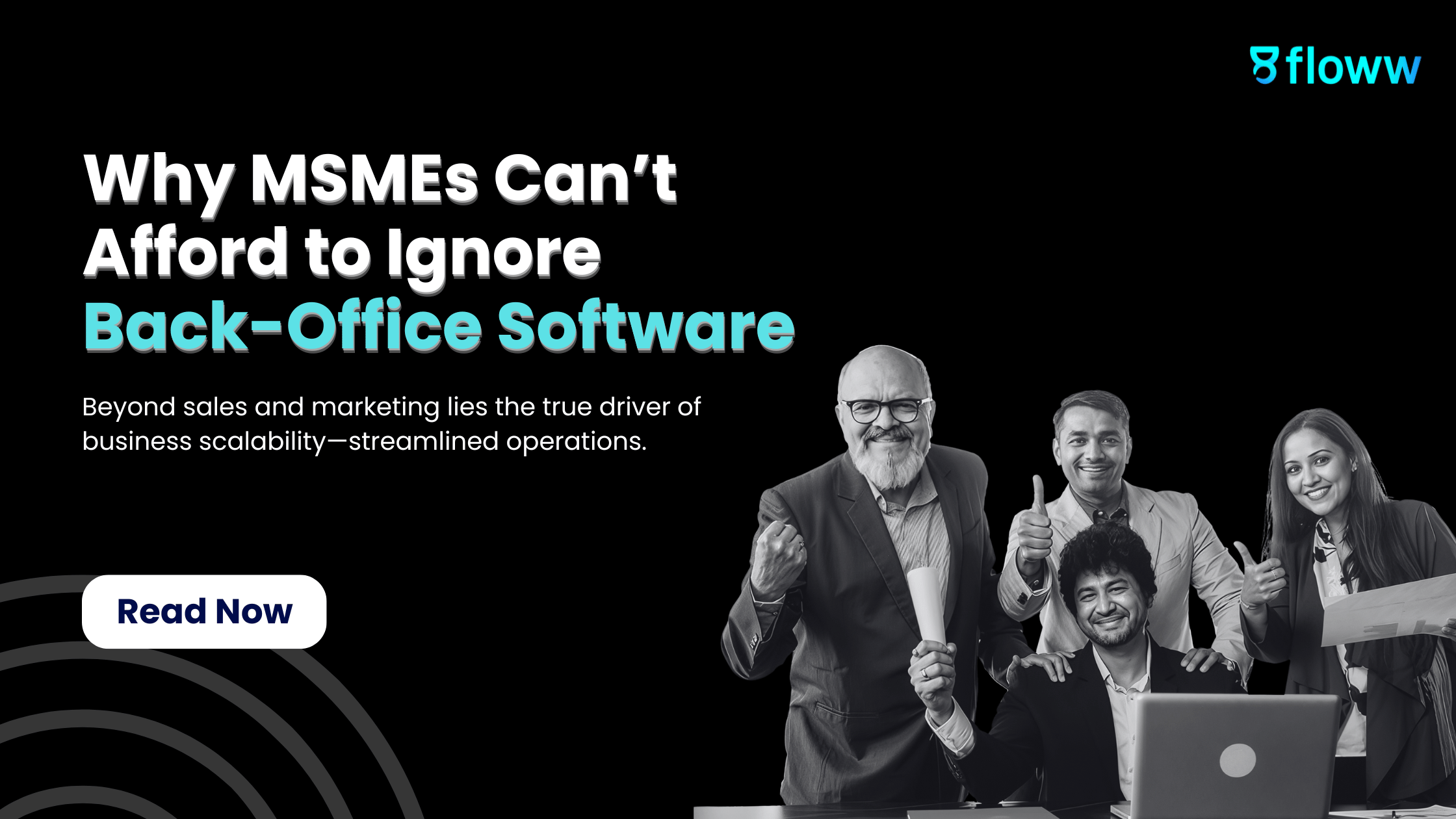Why Back-Office Software Is the Secret Growth Engine No One Talks About
Every business has a secret growth engine, and it’s not always what you see upfront. Back-office software quietly keeps things moving: handling payroll, streamlining tasks, and cutting chaos. It’s the behind-the-scenes hero that gives teams more time to focus on big ideas and real growth.

When people think about business growth, their minds often go straight to sales, marketing, or customer acquisition. These are the flashy, front-facing parts of an organization that get all the attention. But behind every successful enterprise lies an unsung hero: the back office. It is where finances are tracked, compliance is maintained, payroll is managed, and operations are kept running. Without this invisible engine, even the most aggressive marketing campaigns or impressive sales numbers would collapse under the weight of inefficiency.
For MSMEs, the back office has traditionally been seen as a cost center, necessary but far from exciting. That perception is rapidly changing. Thanks to advances in technology, back-office software has become a silent growth partner, empowering small and medium-sized businesses to scale, reduce errors, and reclaim time.
While sales teams may bring in the revenue, it is the streamlined processes powered by business operations software that ensure those revenues are managed, maximized, and turned into sustainable growth.
The Hidden Burden of Manual Back-Office Work

Running a business without automation is like driving with the handbrake partially on. You can move forward, but every step takes more effort than it should. Many MSMEs still rely heavily on spreadsheets, manual data entry, and ad-hoc communication to handle critical back-office tasks. On the surface, this might seem manageable, but as the business grows, inefficiencies compound.
Manual payroll systems lead to errors in salary disbursements. Invoicing delays cause cash flow bottlenecks. Compliance paperwork stacks up until it turns into a last-minute fire drill. Each of these issues eats away at time and resources that could have been directed toward innovation or customer engagement. This is where operations management software becomes invaluable. By automating repetitive tasks, ensuring accuracy, and creating seamless workflows, it lifts the hidden burden off MSMEs and allows them to compete with larger players.
Back Office as a Growth Driver

The back office is often underestimated because its impact is not immediately visible. But the reality is that efficiency behind the scenes directly fuels performance in customer-facing areas. When payroll is managed smoothly, employees feel secure and motivated. When compliance is handled proactively, businesses avoid costly fines and reputational damage. When invoicing and cash flow management are optimized, companies can reinvest faster into growth initiatives.
Think of the back office as the infrastructure of a city. Roads, electricity, and plumbing may not be glamorous, but they are the foundation on which everything else operates. Without them, nothing functions. Similarly, process management software is the infrastructure of modern businesses. It connects the dots between different departments, creates consistency, and ensures the entire operation moves as one cohesive unit. For MSMEs, this means less time lost to chaos and more time spent on strategies that drive growth.
How Back-Office Software Transforms MSMEs
The shift from manual to digital back-office management is not just about saving time. It’s about transforming how a business thinks and operates. Consider an MSME that introduces business operations software into its workflow. Suddenly, payroll is automated, employee records are centralized, vendor invoices are tracked, and reports are generated in real time. What was once fragmented and error-prone becomes smooth and reliable.
This transformation extends to decision-making as well. With manual processes, data is often scattered across different files and systems, making it difficult to get a clear picture. Automation changes this. Operations management software gathers and organizes information into dashboards that provide actionable insights. Leaders can see where money is being spent, identify bottlenecks, and plan for the future with confidence. Instead of reacting to problems after they occur, businesses can anticipate and prevent them.
The Competitive Advantage of Efficiency
By implementing process management software, MSMEs unlock agility. For instance, automated reporting helps leaders adjust strategies on the fly. Streamlined procurement systems prevent supply chain delays. Integrated back-office and front-office systems create better customer experiences because orders, payments, and support are aligned. This level of efficiency gives smaller businesses the agility to compete with larger enterprises without requiring massive teams or budgets.
Overcoming the “Too Expensive” Myth

Many MSMEs hesitate to adopt new technologies because of a lingering perception that software solutions are costly or overly complex. This may have been true a decade ago, but the landscape has shifted dramatically. Cloud-based operations management software is now accessible, scalable, and tailored for businesses of all sizes. Instead of large upfront costs, most solutions are available through subscription models, allowing MSMEs to pay for only what they need. Moreover, the return on investment is clear. Every error avoided, every hour saved, and every compliance risk reduced translates into tangible value.
Why MSMEs Can’t Ignore This Shift

Ignoring back-office modernization is like trying to run a marathon with a heavy backpack. You might make progress, but competitors who have streamlined their operations will outpace you quickly. In markets where customer expectations are higher than ever and margins are often razor-thin, MSMEs cannot afford inefficiency.
Back-office software allows businesses to punch above their weight. It levels the playing field by giving small companies access to the same tools and capabilities that larger corporations use. With business operations software, MSMEs can automate complex workflows, maintain compliance without stress, and ensure their teams are working on high-value activities instead of repetitive tasks.
The Future of Back-Office Transformation

As technology evolves, the role of the back office will only become more critical. Artificial intelligence and machine learning are being integrated into process management software, allowing predictive insights and even smarter automation. Imagine a system that not only tracks invoices but also predicts late payments and suggests proactive actions. Or payroll systems that optimize tax deductions automatically to maximize employee satisfaction.
Conclusion
The narrative that growth is only driven by sales and marketing is incomplete. Behind every thriving company lies a robust, efficient back office quietly powering success. For MSMEs, investing in back-office software is about building a foundation strong enough to sustain growth.
By embracing operations management software, leveraging business operations software, and integrating process management software, small and medium-sized businesses unlock a growth engine that is often overlooked. The difference between struggling with chaos and scaling with confidence comes down to how well the invisible backbone of the business is managed.
The next time you think about growth strategies, remember this: your back office may not be visible to your customers, but its impact touches every single interaction. The companies that recognize this truth will not only survive but thrive in an increasingly competitive world.

